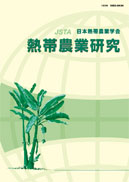Volume 2, Issue 2
Displaying 1-11 of 11 articles from this issue
- |<
- <
- 1
- >
- >|
Original Article
-
2009 Volume 2 Issue 2 Pages 71-79
Published: 2009
Released on J-STAGE: August 21, 2013
Download PDF (887K) -
2009 Volume 2 Issue 2 Pages 80-84
Published: 2009
Released on J-STAGE: August 21, 2013
Download PDF (967K)
Information
-
2009 Volume 2 Issue 2 Pages 85-89
Published: 2009
Released on J-STAGE: August 21, 2013
Download PDF (443K)
Symposium
-
2009 Volume 2 Issue 2 Pages 90
Published: 2009
Released on J-STAGE: August 21, 2013
Download PDF (170K) -
2009 Volume 2 Issue 2 Pages 91-94
Published: 2009
Released on J-STAGE: August 21, 2013
Download PDF (509K) -
2009 Volume 2 Issue 2 Pages 95-99
Published: 2009
Released on J-STAGE: August 21, 2013
Download PDF (350K) -
2009 Volume 2 Issue 2 Pages 100-106
Published: 2009
Released on J-STAGE: August 21, 2013
Download PDF (979K)
Research Meeting
-
2009 Volume 2 Issue 2 Pages 107-111
Published: 2009
Released on J-STAGE: August 21, 2013
Download PDF (388K) -
2009 Volume 2 Issue 2 Pages 112-115
Published: 2009
Released on J-STAGE: August 21, 2013
Download PDF (391K) -
2009 Volume 2 Issue 2 Pages 116-120
Published: 2009
Released on J-STAGE: August 21, 2013
Download PDF (431K) -
2009 Volume 2 Issue 2 Pages 121-123
Published: 2009
Released on J-STAGE: August 21, 2013
Download PDF (253K)
- |<
- <
- 1
- >
- >|
